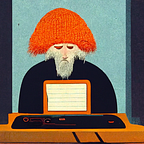Why do I care: Internet of Things (IoT)
So what is IoT exactly?
The Internet of Things (IoT) is a system of interconnected devices, digital and physical, that are able to collect and exchange data. While the term itself has been used for a long time, we have only now started seeing the full potential of IoT in customary lives. The IoT allows people and organizations to connect and interact with devices in ways never before possible.
Class, history lesson
The history of the IoT can be traced back to the early days of radio and television when these new technologies were first used to broadcast information over long distances. In the 1970s, researchers began experimenting with using computers to communicate with each other without human intervention. This led to the development of protocols like TCP/IP that would eventually form the basis for the modern internet.
The term “Internet of Things” was first coined by Kevin Ashton in 1999 while working at Procter & Gamble. Ashton was exploring ways to use RFID tags to track inventory and came up with the idea that if all objects were connected to the internet, they could be tracked and monitored more easily. This was a groundbreaking idea that ultimately has led to us being where we stand now on “smart” devices and interconnectedness. The concept gained traction in the early 2000s as wireless technologies improved and costs decreased.
In recent years, advances in sensor technology and miniaturization have made it possible to embed computing power and connectivity into everyday objects. This has given rise to a whole new class of devices known as “smart” or “connected” devices. These devices are able to collect data about their environment and send it back to a central location for analysis. Next, let’s see what devices labelled as “smart” we see on a daily basis.
A smidge of a smart fridge
- Smart Fridges: A lot of newer fridges now come equipped with Wi-Fi and apps that allow you to do things like check what you have in your fridge while you’re at the grocery store or set expiration date alerts. That’s not a commonality yet, but I believe that by the time I finish university, those will become more and more common.
- Wearables: fitness trackers and smartwatches are perhaps the most popular examples of IoT devices that people use every day. These devices often track things like steps taken, heart rate, and sleep patterns. Your smartwatches like Garmin are also such wearables.
- Home Security: There are now plenty of home security systems on the market that allow you to monitor your home and keep an eye on things even when you’re not there. Many of these systems can be controlled via smartphone apps.
- Connected Cars: More and more cars are now coming with built-in connectivity features that allow them to do things like provide turn-by-turn directions, play music from your phone, or even call for help in the event of an accident.
- Smart Thermostats: One of the more popular “smart home” devices is the thermostat. These devices can learn your temperature preferences over time and then automatically adjust to keep your home at a comfortable temperature without you having to lift a finger. Absolute love of mine — I beg for one to be in my next appareament.
Where are we heading, captain?
The IoT is still in its early stages of development, but it is already having a profound impact on our lives. Smartphones, fitness trackers, home automation systems, and connected cars are just some of the ways that the IoT is making our lives easier and more efficient. In the future, the IoT is expected to become even more ubiquitous, with billions of devices connected to each other all around the world. There are a lot of directions for IoT to expand. Some potential research and new products in the IoT space that can be more widely integrated in the future include: -Smart homes/buildings that are able to automatically adjust heating, cooling, lighting, and security based on occupancy -Wearables that track our health and fitness data and send it to our doctors or insurance companies -Autonomous vehicles that communicate with each other and with infrastructure to avoid accidents and traffic congestion -IoT-enabled city infrastructures such as trash cans that automatically empty themselves when full or streetlights that dim when no one is around
Conclusion
Internet of Things has been around for a while now, and it is slowly but surely becoming an integral part of our lives. From fitness trackers to smart thermostats, there are a plethora of devices that can make our lives easier and more comfortable. While some people are still hesitant about adopting this new technology, there are many good reasons to do so. IoT can save us time and money, and it can also help us be more efficient and sustainable. So if you’re on the fence about whether or not to join the IoT revolution, consider all the ways it can improve your life.
